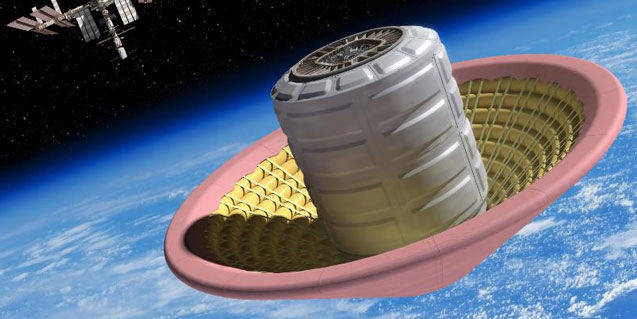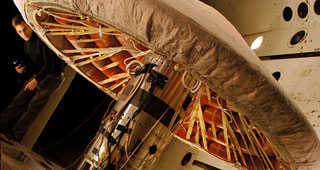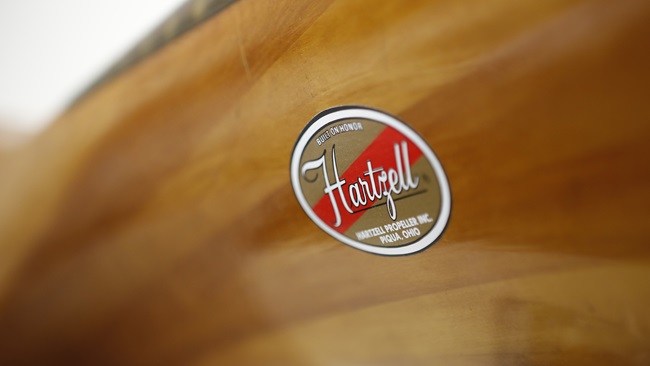
This NASA rendering depicts an inflatable heat shield similar to one tested July 23 by NASA. Image courtesy NASA.
Both manned and unmanned missions of the future may be protected on a perilous journey through atmospheric entry—with all of the heat that creates—by what is, in essence, a balloon.
Willing to bet your life?
 NASA engineers successfully deployed an inflatable heat shield during a rocket test July 23, using nitrogen gas to give it shape. NASA photo.
NASA engineers successfully deployed an inflatable heat shield during a rocket test July 23, using nitrogen gas to give it shape. NASA photo.
NASA engineers proved what might seem improbable with a July 23 test that sent a rocket to an altitude of 280 miles over the Atlantic Ocean, then blew up the mushroom-shaped balloon for a 7,600 mph reentry. Onboard cameras provided views to confirm the shield, made of layers of heat-resistant material inflated by nitrogen, held its shape, and withstood both blistering temperatures and a hypersonic slipstream. The 20-minute flight of the Inflatable Reentry Vehicle Experiment (IRVE-3) paves the way for future designs that will scale the concept up to a size that can protect cargo and manned missions returning from the International Space Station—along with more far-flung destinations.
"It's great to see the initial results indicate we had a successful test of the hypersonic inflatable aerodynamic decelerator," said James Reuther, deputy director of NASA's Space Technology Program, in a news release. "This demonstration flight goes a long way toward showing the value of these technologies to serve as atmospheric entry heat shields for future space."



